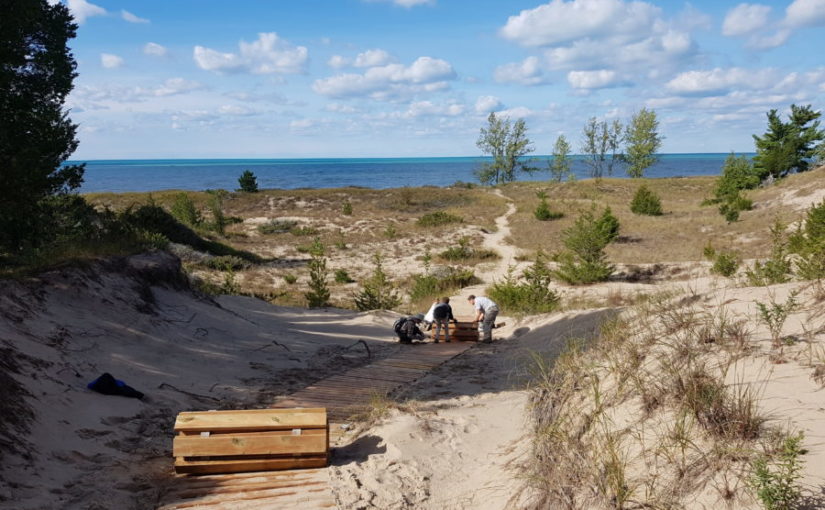Today’s post comes from Amy Hall, a Resource Management Project Technician at Pinery Provincial Park.
Many of our visitors have been coming to Pinery for decades, witnessing the park change in many ways over time.
If you’ve been here in the last few years, you may have noticed that our beach is constantly changing month to month, and even day to day!
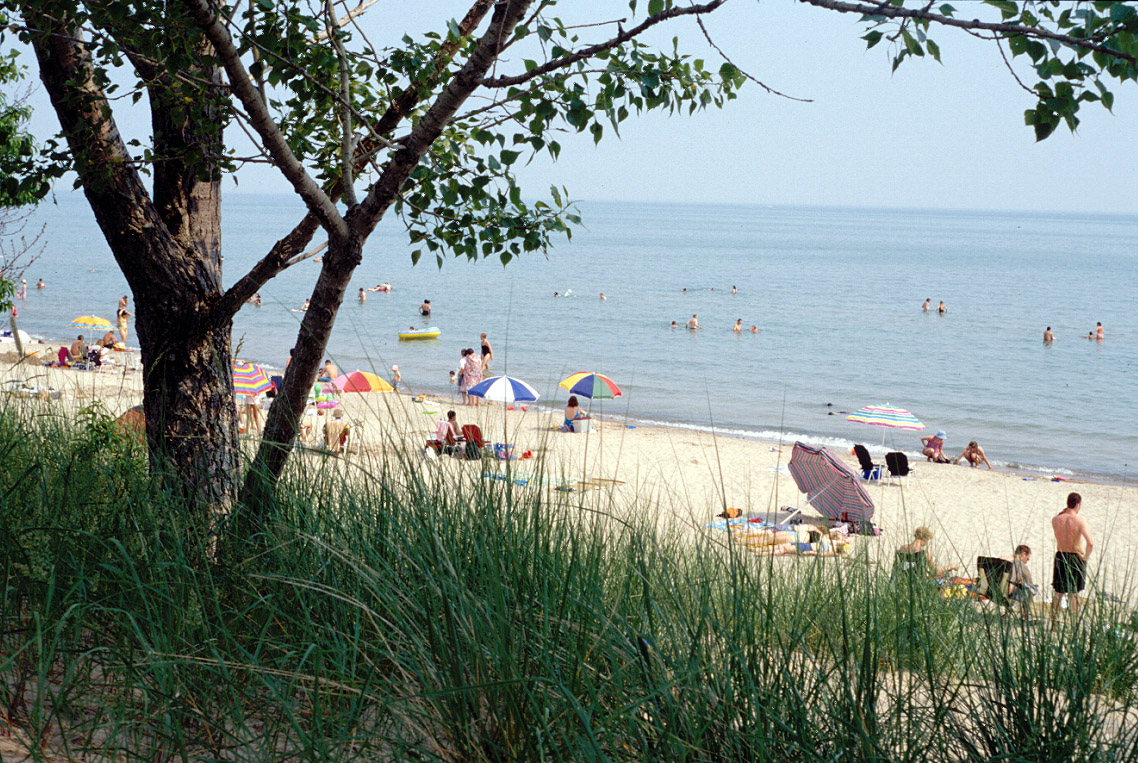
Most remember the beach years ago when Lake Huron’s water levels were lower, and our sandy beach was much wider. If you visit Pinery this year, you’ll find this is no longer the case.
Smith Family Camping Journal
- Date: July 21, 2019
- Location: Pinery Provincial Park
- Campground: Riverside Area 4
- Site number: 784
Notes: Beach day! We drove to P9 beach access and parked our car just metres from the lake. The kids got out of the car and immediately took off running through the dunes to the water. I noticed a sign saying “fragile ecosystem.” I should ask the naturalist at the Visitor Centre about that.
We locked the car and walked down to the beach. It’s so small this year! It was barely wide enough to put out a towel. I wonder what happened to it.
Been there, dune that
The history of Pinery’s sand dunes goes back thousands of years, long before Pinery was a park with hundreds of thousands of beach-goers each year.
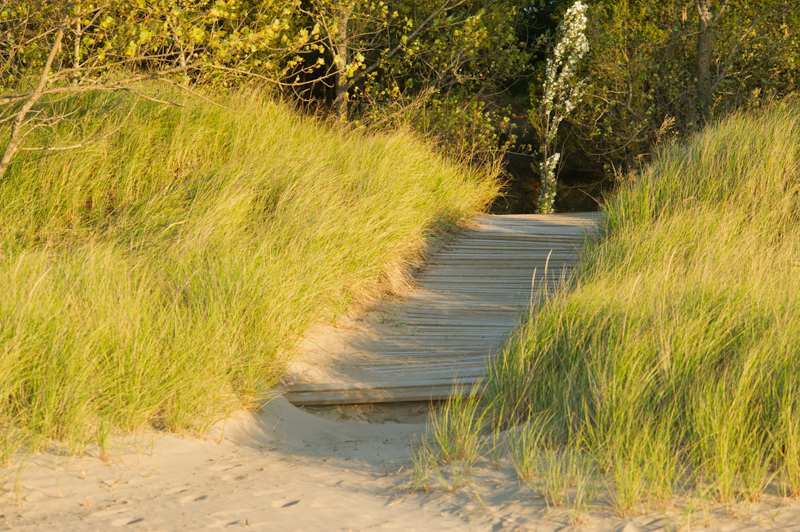
Lake Huron’s levels have fluctuated greatly over time, with years of record-breaking highs and a general trend of levels receding. Lake level fluctuations have established six distinct dune ridges throughout Pinery over a 6,000 year period.
In fact, sand dune formation relies on water level fluctuation in order to occur, with periods of high lake levels being responsible for the most rapid formation of dunes. It is this very process, combined with wind and vegetation, that forms dunes.
However, it may take centuries for a dune ridge to form due to intermittent erosion events, like the one Pinery is currently experiencing.
Gone in a splash
Working as a naturalist in the Visitor Centre, one of the most common questions asked is, “What happened to the beach?”
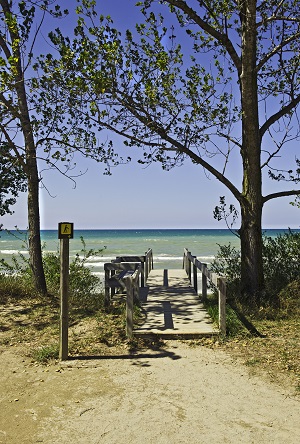
Well, the truth is Mother Nature happened to the beach!
When lake levels are high and we experience any type of severe weather, both the wind and waves coming off the lake crash into the shoreline and erode our dunes to varying degrees.
When asked about erosion, we like to tell campers one of our favorite quotations: “Sand dunes are like bank accounts. Sometimes the lake makes a deposit, and sometimes it makes a withdrawal.”
Rest assured that Lake Huron is a responsible banker. Despite the recent withdrawals, the bank account will likely continue to grow!
With 6,000 years of good credit, we have full confidence in Lake Huron.
What are we doing in the meantime?
Adapting.
Sand dunes are resilient and are built to withstand erosion. Marram Grass (Ammophila breviligulata) is fundamental in the formation of dunes at Pinery. This grass is the foundation that holds together sand that is deposited on Pinery’s beach and allows dunes to establish.
The sand dunes will bounce back from erosion as long as there is Marram Grass present along our shoreline. Therefore, we are working to conserve our dune vegetation in order to prevent further erosion.
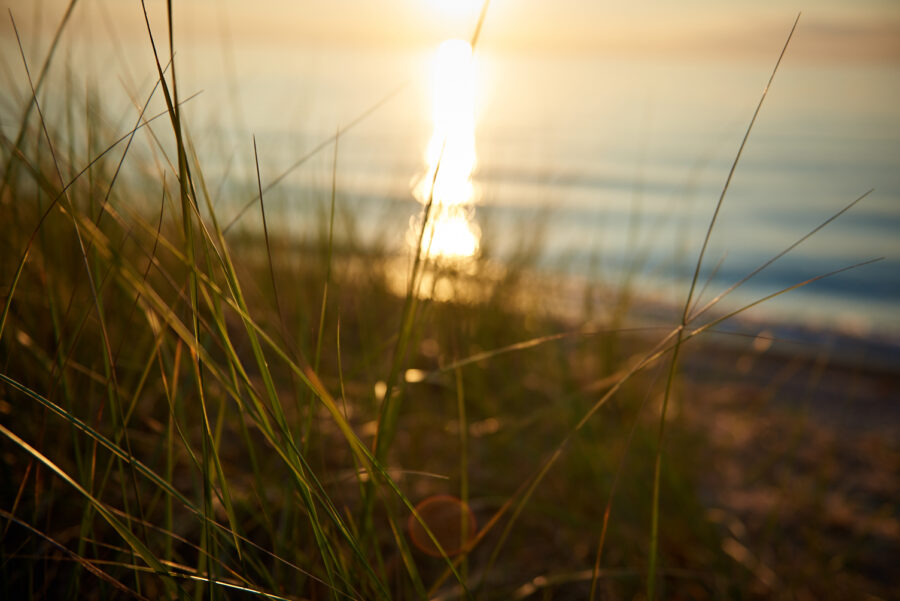
Sustainable recreation is essential in order to protect the health of the sand dunes at Pinery. We want all of our visitors to be able to use our beach and experience the beauty of Lake Huron, but to do so in a responsible and sustainable way.
Recreation and development are the greatest threat to sand dune ecosystems around the world.
At Pinery, we are experiencing unnatural erosion of our sand dunes as a result of vegetation trampling. Well-meaning beach goers are ignoring designating trails and forging their own paths through the dunes, killing the Marram Grass and resulting in large scale vegetation die-offs (also called “blowouts”).
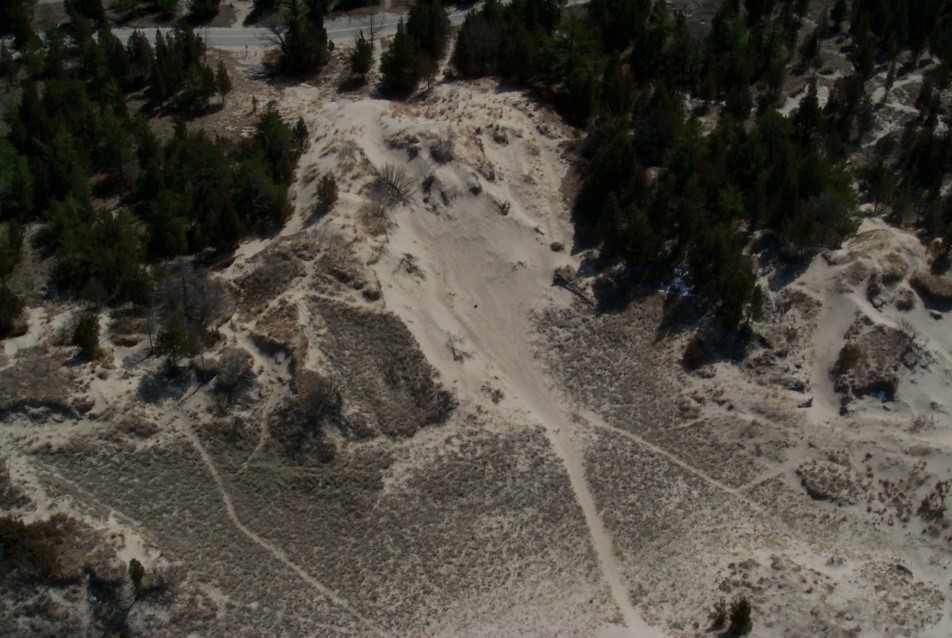
Blowouts occur when vegetation is no longer present to stabilize a dune, and as a result, the wind coming off the lake blows the sand away, leaving a massive crater-like hole in our dunes.
Smith Family Camping Journal
- Date: July 14, 2019
- Location: Pinery Provincial Park
- Campground: Riverside Area 4
- Site number: 784
Notes: This morning we attended an Ask a Naturalist program about sand dune succession. We learned how rare and fragile sand dune ecosystems are. The naturalist told us that walking on dunes can really harm them. We had no idea! We learned about Marram Grass, blowouts, and rolling boardwalks. I’m glad we know we can help protect the dunes!
Human-caused erosion makes a dune less resilient to natural erosion. When large waves come up onto our beach and erode our youngest dune ridge, there is an extensive network of Marram Grass roots that are able to hold most of the dune in place. But if we kill Marram Grass through trampling, extreme weather coming off the lake could do more damage than it would to a healthy dune.
Just roll with it!
The good news is that we have a solution to this problem — rolling boardwalks.
Pinery staff and volunteers installed the first rolling boardwalks in 2010. Since then, we’ve deployed numerous sections of rolling boardwalk throughout the park at various beach access points, even improving our rolling boardwalk design!
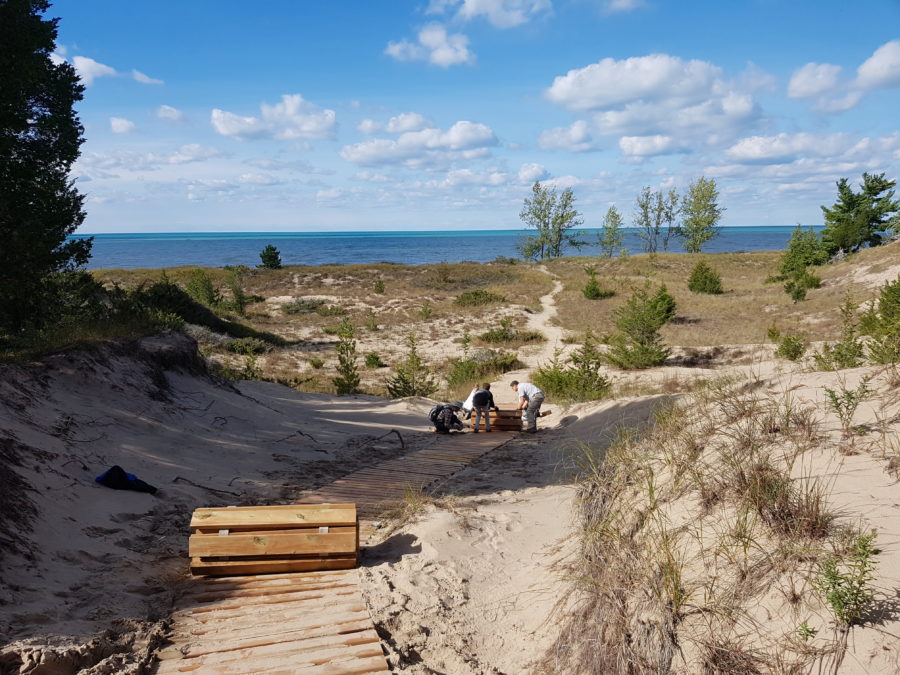
Our new design makes use of decommissioned fire hose from the Aviation Forest Fire and Emergency Services branch of the Ministry of Natural Resources and Forestry.
Not only is the flexible nature of fire hose perfect for a boardwalk to contour sand dunes, this design also prevents old damaged fire hose from going to the landfill.
We have found that rolling boardwalks have been effective in reducing trampling of dune vegetation and are more accessible for visitors by creating a solid walkway, giving them direction to the beach.
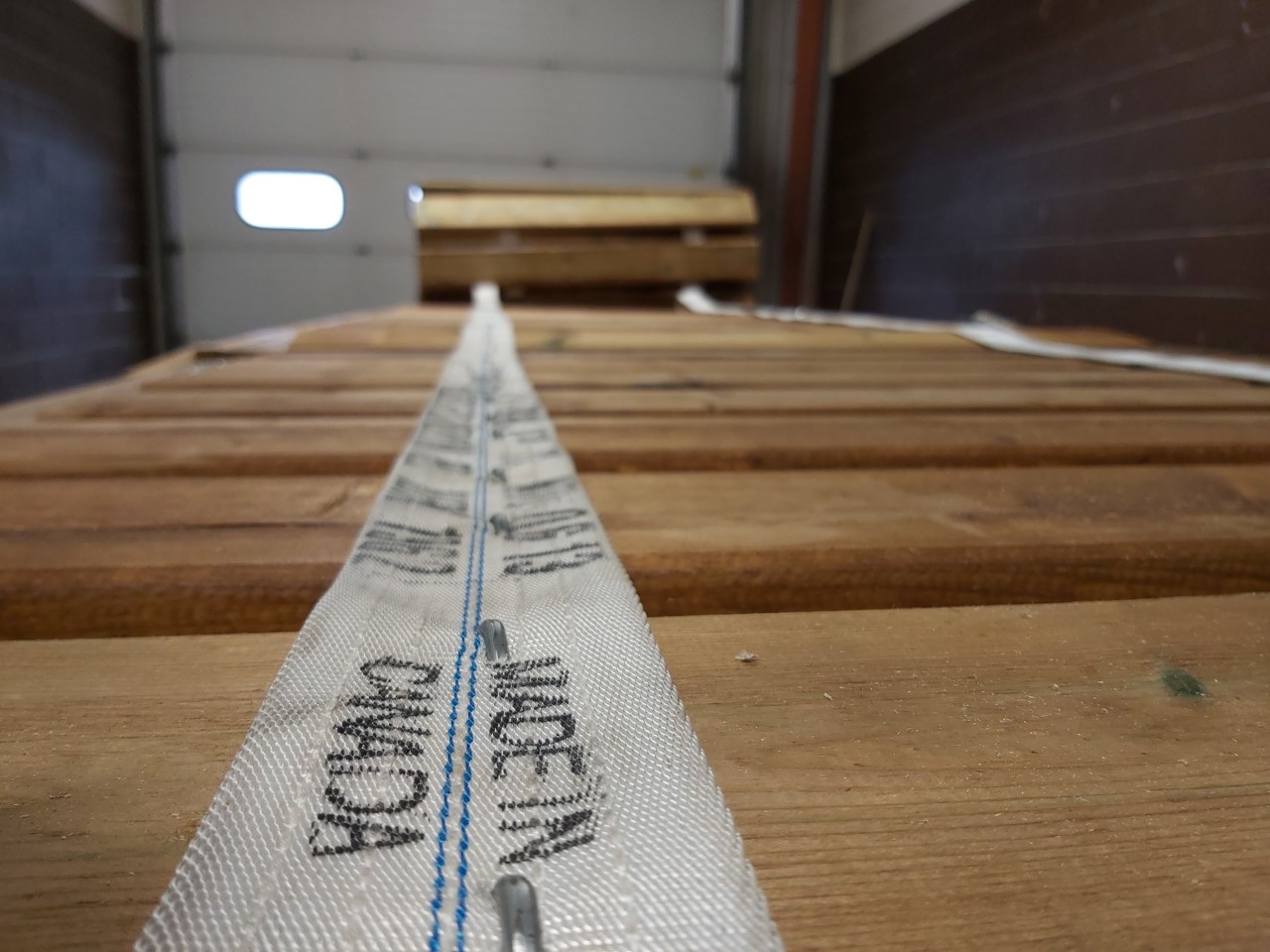
This year, we plan to install even more rolling boardwalks!
Ontario Parks, the Friends of Pinery Park, and the Grand Bend Community Foundation, with support from the RBC Future Launch Community Challenge, have funded a “rolling boardwalks for resilient ecosystems” stewardship project at Pinery for 2020. The Friends of Pinery Park plan to continue this project in 2021.
This project aims to install rolling boardwalks throughout Pinery in high-trampling areas. Marram Grass will then be transplanted to affected areas in order to rehabilitate blowouts and prevent further erosion by wind and waves.
Walk the line
In the past year, we’ve experienced significant damage to our shoreline infrastructure, including our road access to Beach Area 9 (P9) being washed out and closed indefinitely.
![]()
Beach Areas 8 and 9 are very popular beach access locations in Pinery. We will be relying on rolling boardwalks to help visitors access our beaches in areas that no longer have car access or staircases available.
Pinery staff have been working diligently to construct rolling boardwalks to deploy throughout the park in preparation for the 2020 beach season. We want to uphold the ecological integrity of the park while also providing fun and safe recreation opportunities for our visitors.

Rolling boardwalks will allow us to designate paths through the dunes, avoiding sensitive areas and species at risk. Through staff efforts and visitor cooperation, we can reduce the amount of trampling to our dunes while enjoying the park as visitors have for decades.
Please assist us by staying on designated pathways and off dunes.
Smith Family Camping Journal
- Date: August 1, 2020
- Location: Pinery Provincial Park
- Campground: Riverside Area 4
- Site number: 784
Notes: We went to our favorite beach spot at P9 again this year, although things looked a little different.
We drove down to P9 and noticed a yellow gate blocking the roadway down to the beach, so we parked in the upper lot. It was only about 100 m from the beach, no big deal. We parked and the boys got out and took off running down the rolling boardwalk to the beach.
I noticed a sign that said “fragile ecosystem” and another saying “Ecosystem restoration project, please use designated path.” We locked up the car and walked down to the beach. I overheard a woman saying, ‘The beach is so small.’
I replied, ‘The naturalist at the Visitor Centre told me that sand dunes are like bank accounts…'”
